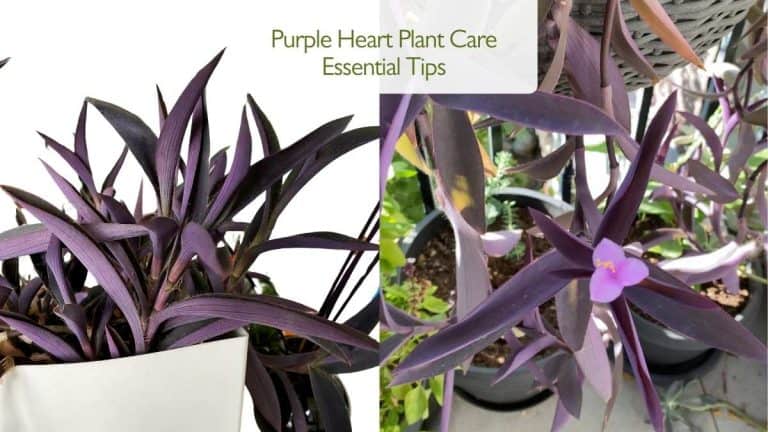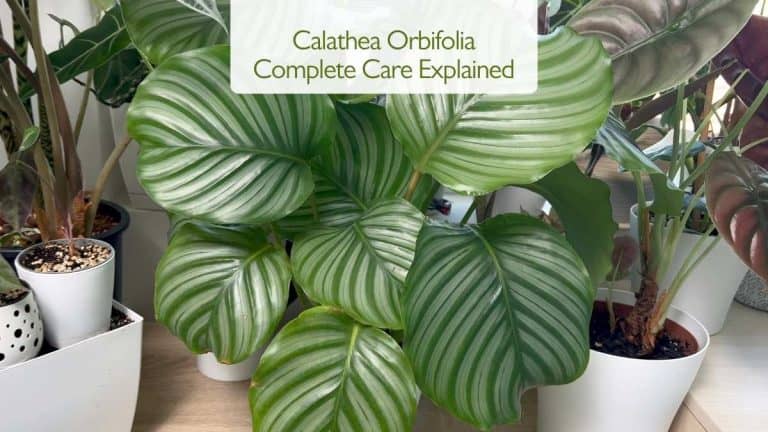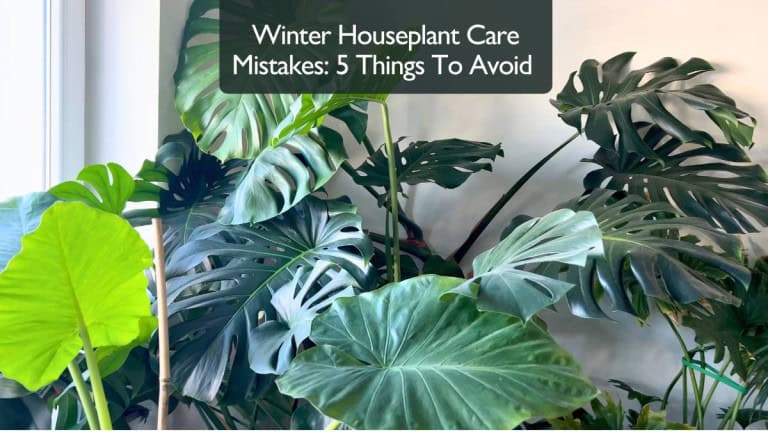Golden Pothos Care: All You Need To Know
The Golden Pothos (Epipremnum aureum) is one of the most loved and recognized houseplants for a reason. Its heart-shaped green leaves brushed with golden-yellow streaks add instant freshness and life to any space. Easy to grow, fast to adapt, and incredibly forgiving, this tropical vine is often the first plant that turns a simple corner into a lush green spot.
It grows well in a variety of conditions, trailing beautifully from shelves, climbing moss poles, or hanging in bright rooms. Once you understand a few simple rules, Golden Pothos care becomes effortless – and the reward is vibrant, healthy growth that never disappoints.
📹 Before we dive in, here’s my video that shows real examples of Pothos care and growth. It’s a perfect visual companion because care for Golden and Neon Pothos is almost identical:
Click here to watch the video on YouTube
Light Requirements for Golden Pothos Care
Light plays a huge role in how vibrant your Pothos looks. Golden Pothos care starts with giving it the right amount of brightness to keep those golden-yellow streaks glowing.
Pothos thrives in bright, indirect light but is famous for adapting to almost any environment. Too little light will cause the leaves to lose their variegation and turn solid green, while strong direct sunlight can bleach or burn the foliage.
I keep one of mine a few feet away from an east-north–facing window, where it gets gentle morning light and bright shade for the rest of the day. It’s growing beautifully, producing new leaves regularly with rich, golden tones.
Another one is growing in water, placed a few feet away from a south-west–facing window. The light there is stronger, but because the plant isn’t exposed to direct sun, the leaves stay perfectly healthy and the color is more intense.
This difference shows just how adaptable Pothos can be; as long as there’s enough light, it will keep growing and trailing happily. Still, brighter conditions always mean stronger growth and more vivid variegation.
👉 The key takeaway: avoid deep shade, protect from harsh midday sun, and your Golden Pothos will reward you with lush, colorful leaves all year long.

Watering Golden Pothos Care
Watering is where many plant owners make mistakes, but luckily, Pothos is very forgiving. The key to proper Golden Pothos care is to let the soil dry out slightly between waterings.
Stick your finger about an inch into the soil – if it feels dry, it’s time to water. Always water thoroughly until it drains from the bottom, then empty any excess water from the saucer. Overwatering can cause root rot, while underwatering will make the leaves droop.
From my own experience, my Pothos in brighter light needs watering about once every 5–7 days in summer, while in winter, I water roughly every 10–14 days. If the leaves start to curl slightly, that’s a gentle reminder that the plant is thirsty.
💧 Tip: Pothos is sensitive to constantly wet soil, so always make sure the pot has drainage holes. To track your watering schedule easily, use my Plant Watering Planner and note how often your plant dries out — it helps you develop a perfect rhythm.
Best Soil for Golden Pothos Care
The Golden Pothos thrives in a well-draining, nutrient-rich potting mix. A mix designed for houseplants or aroids works perfectly. If you prefer making your own aroid mix, check out my article here. But they grow really well in regular houseplants mix as soon as you are not overwatering.
Good drainage is essential to prevent soggy roots. Always use a pot with drainage holes, and repot your Pothos every 1–2 years in spring to refresh the soil and encourage healthy growth.
Humidity and Temperature for Golden Pothos Care
Golden Pothos prefers moderate to high humidity but will tolerate normal household levels just fine. If the air is too dry, especially during winter, you might notice slightly crispy leaf tips.
Maintain a temperature between 65–85°F (18–29°C) this tropical plant loves warmth. Keep it away from cold drafts and air conditioners, as sudden temperature drops can stunt its growth.
If you want to give it an extra boost, place your pothos near a humidifier or group it with other plants to create a naturally humid microclimate.
Fertilizing Golden Pothos Care
Pothos is not a heavy feeder, but regular fertilizing keeps it looking its best. During the growing season (spring to early fall), feed every 4 weeks with a balanced liquid houseplant fertilizer diluted to half strength. They are very sensitive to chemicals so be cautious with fertilizing.
If you prefer a natural approach, you can use my Homemade Organic Fertilizer Recipe — it’s gentle, effective, and great for long-term plant health.
Pruning and Propagation of Golden Pothos
Pruning is an important part of Golden Pothos care, helping your plant stay full and encouraging new growth. Trim leggy vines just above a leaf node – new shoots will soon sprout from that point.
The cuttings are perfect for propagation. Simply place them in water or directly into moist soil, and within a few weeks, they’ll develop roots. Pothos is one of the easiest houseplants to propagate, making it great for expanding your collection or sharing with friends.
Want to see how I propagate Pothos step by step? Watch my video where I show the exact process:
Common Problems in Golden Pothos Care
Even though Golden Pothos care is quite simple, a few common issues can appear – especially if growing conditions change suddenly.
The most frequent problems are yellowing leaves, root rot, and leggy growth.
Yellow leaves often mean overwatering or poor drainage. Let the soil dry out before watering again, and make sure the pot has drainage holes.
If the leaves turn pale or lose variegation, your plant is likely not getting enough light. Move it closer to a brighter spot.
Leggy stems (long stems with fewer leaves) usually happen in low light – trimming and providing better light will encourage fuller growth.
I’ll soon publish a full article about 5 Mistakes to Avoid with Golden Pothos, where I’ll explain these issues in detail and how to fix them step by step – from overwatering to fertilizer problems. Stay tuned!
Are Golden Pothos Pet Safe?
Unfortunately, Golden Pothos is toxic to pets if ingested, as it contains calcium oxalate crystals. Keep it out of reach of cats and dogs, and check my list of Pet-Friendly Houseplants if you’re looking for safe alternatives.
Related Topics
Final Thoughts on Golden Pothos Care
The Golden Pothos care routine is one of the easiest you’ll ever follow. With the right mix of bright light, proper watering, well-draining soil, and occasional feeding, this plant will reward you with lush, trailing vines and vibrant golden-green leaves.
Perfect for hanging baskets, shelves, or tabletop displays, the Golden Pothos is a classic that never goes out of style. It’s beautiful, forgiving, and the perfect plant to grow your confidence as a plant parent.
Click here to watch the video on YouTube
Explore More Music for Your Plants & Stay Connected!
Check out my Playlist: Music for Plants and find the perfect tunes to help your plants and yourself thrive.
Don’t forget to visit my YouTube Channel Plant House & Garden and subscribe — your support means the world to me!
Connect with me on social media for more plant care tips and music updates: Instagram | Facebook | X | Pinterest | Reddit | TikTok
Love plants? Love music? Don’t miss out on new updates — hit subscribe and follow now to keep your plants happy and your space vibrant!







